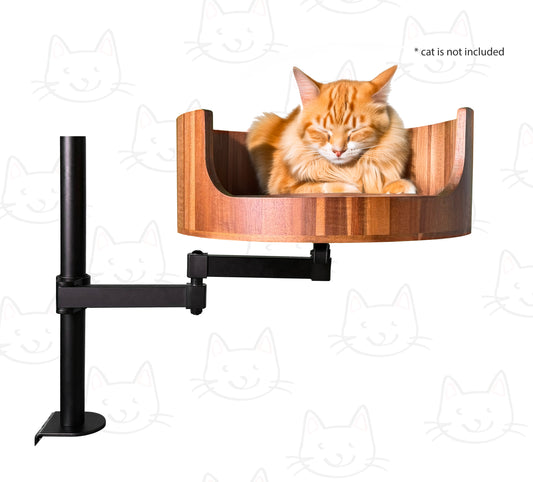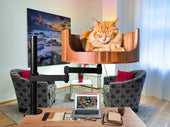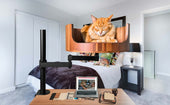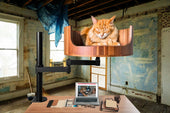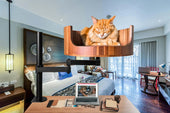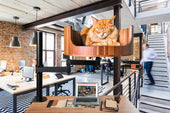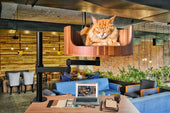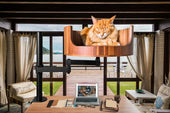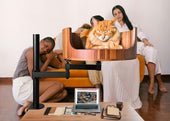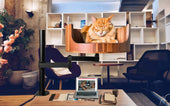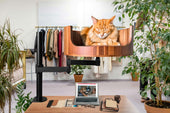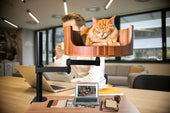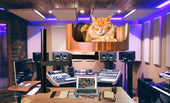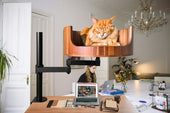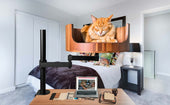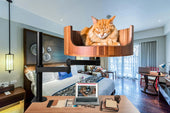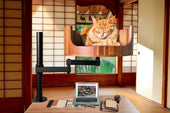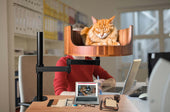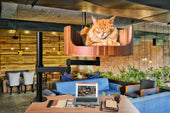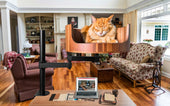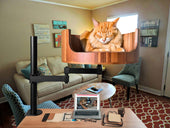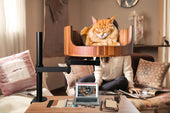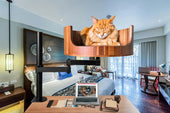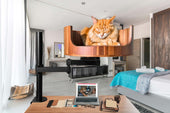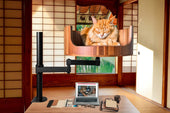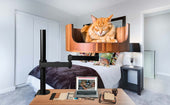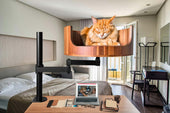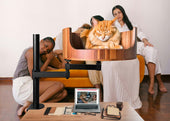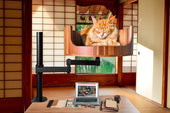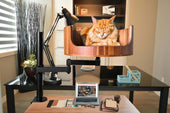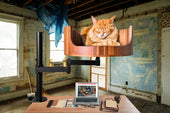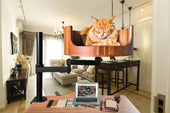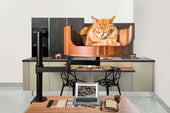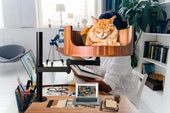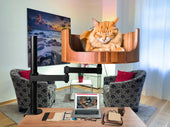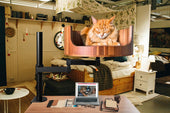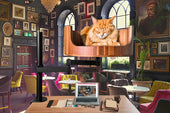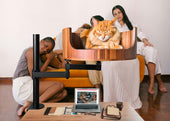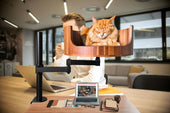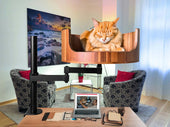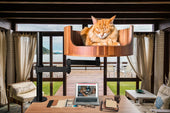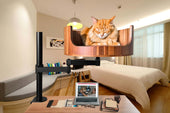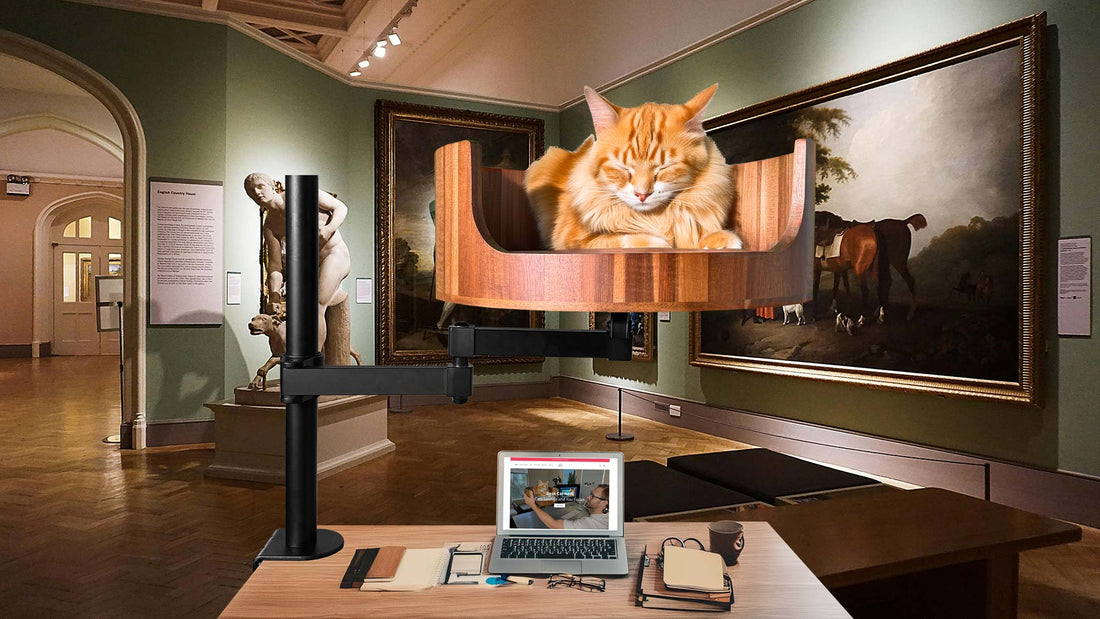
Cat Pukes After Eating Dry Food: Causes and Solutions
Share
Do you have a beloved feline companion who frequently regurgitates after meals? You're not alone. It can be concerning and frustrating when your cat constantly vomits after eating dry food. In this article, we will delve into the possible causes of this issue and explore some potential solutions to help your furry friend feel better and reduce the mess in your home.
One possible explanation for why your cat is frequently throwing up after eating dry food is that they may be eating too quickly. This can lead to indigestion and irritation in their stomach, causing them to vomit shortly after consuming their meal. Additionally, some cats may have sensitive stomachs that cannot tolerate certain ingredients in their dry food, leading to bouts of vomiting. By examining your cat's eating habits and the ingredients in their food, you can potentially pinpoint the cause of the issue and make necessary adjustments to help prevent future vomiting episodes.
1. Eating dry food too quickly can cause cats to vomit shortly after eating.
2. Allergies to ingredients in the dry food can also lead to vomiting in cats.
3. Feeding smaller, more frequent meals can help reduce vomiting in cats.
4. Introducing wet food into the diet can help prevent vomiting in cats.
5. If vomiting persists, consulting with a veterinarian is recommended to rule out any underlying health issues.
Causes of Cat Vomiting After Eating Dry Food
There are several potential reasons why a cat may vomit after eating dry food. One common cause is food intolerance or sensitivity, where the cat's digestive system has difficulty processing a specific ingredient in the food. Another possible trigger is eating too quickly, causing the cat to swallow air along with the food. Other factors such as hairballs, underlying medical conditions, or even stress can also lead to vomiting in cats after eating.
Possible Solutions for Preventing Cat Vomiting
If your cat is frequently vomiting after eating dry food, there are several steps you can take to try and prevent this behavior. One solution is to switch to a different brand or type of dry food that may be easier on your cat's stomach. Alternatively, you can try feeding smaller, more frequent meals to help reduce the likelihood of overeating and vomiting. It may also be beneficial to incorporate wet food into your cat's diet, as the higher moisture content can aid in digestion and reduce the risk of vomiting.
Consulting with a Veterinarian
If your cat continues to vomit after eating dry food despite trying various solutions at home, it is important to seek advice from a veterinarian. A vet can perform a thorough examination to rule out any underlying medical conditions that may be causing the vomiting. They may also provide specific recommendations tailored to your cat's individual needs, such as dietary changes, medication, or further diagnostic testing. In some cases, medical intervention may be necessary to address the root cause of the vomiting and ensure your cat's health and well-being.
Frequently Asked Questions
1. Can the Desk Cat Nest help prevent my cat from puking after eating dry food?
While the Desk Cat Nest is designed to provide a comfortable and secure space for your cat to eat, it is not a guaranteed solution for preventing puking after consuming dry food. We recommend consulting with your veterinarian to address any underlying health issues that may be causing your cat's digestive issues.
2. How does the Desk Cat Nest differ from traditional feeding bowls?
The Desk Cat Nest is specifically designed to elevate your cat's food and water dishes to a more comfortable height, which can help improve digestion and reduce the chances of regurgitation. Additionally, the nest-like design provides a cozy and enclosed space for your cat to relax while eating.
3. Is the Desk Cat Nest suitable for all sizes and breeds of cats?
Yes, the Desk Cat Nest is suitable for cats of all sizes and breeds. The adjustable height feature allows you to customize the feeding station to accommodate your cat's unique preferences and needs.
4. How do I clean the Desk Cat Nest?
The Desk Cat Nest is easy to clean with warm water and mild soap. Simply wipe down the surface of the feeding station and bowls regularly to ensure a clean and hygienic dining area for your cat.
In conclusion, opting for a Desk Cat Bed can greatly reduce the occurrence of cat pukes after eating dry food. By providing a comfortable and elevated space for your cat to digest their meals, this product can help prevent indigestion and promote better overall digestive health. Additionally, the raised design of the Desk Cat Bed can also deter other pets from bothering your cat while eating, further reducing stress and potential digestive issues. Overall, investing in a Desk Cat Bed is a valuable choice for cat owners looking to improve their feline friend's digestion and overall well-being.

